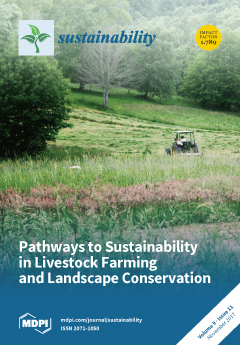1
Centro Internacional de Agricultura Tropical (CIAT), Apartado Aéreo 6713, Palmira, Colombia
2
CGIAR Research Program on Climate Change, Agriculture and Food Security (CCAFS), Apartado Aéreo 6713, Palmira, Colombia
3
Federación Nacional de Arroceros (FEDEARROZ), 500001 Villavicencio, Colombia
4
Fondo Latinoamericano para Arroz de Riego (FLAR), Apartado Aéreo 6713, Palmira, Colombia
5
Ministerio de Ambiente y Desarrollo Sostenible (MADS), 111711 Bogotá, Colombia
6
Federación Colombiana de Ganaderos (FEDEGAN), 111711 Bogotá, Colombia
7
Ministerio de Agricultura y Desarrollo Rural (MADR), 111711 Bogotá, Colombia
8
Department of Plant Sciences, University of California, Davis, CA 95616, USA
9
Instituto Nacional de Tecnología Agropecuaria (INTA), 1000 Buenos Aires, Argentina
10
Universidad Nacional de Colombia (UNAL), 050001 Medellín, Colombia
‡
Plant Polymer Research Unit, National Center for Agricultural Utilization Research, Agricultural Research Service, United States Department of Agriculture, 1815 North University Street, Peoria, IL 61604, USA
add
Show full affiliation list
remove
Hide full affiliation list
Abstract
Agricultural producers grapple with low farm yields and declining ecosystem services within their landscapes. In several instances, agricultural production systems may be considered largely unsustainable in socioeconomic and ecological (resource conservation and use and impact on nature) terms. Novel technological and management options
[...] Read more.
Agricultural producers grapple with low farm yields and declining ecosystem services within their landscapes. In several instances, agricultural production systems may be considered largely unsustainable in socioeconomic and ecological (resource conservation and use and impact on nature) terms. Novel technological and management options that can serve as vehicles to promote the provision of multiple benefits, including the improvement of smallholder livelihoods, are needed. We call for a paradigm shift to allow designing and implementing agricultural systems that are not only efficient (serving as a means to promote development based on the concept of creating more goods and services while using fewer resources and creating less waste) but can also be considered synergistic (symbiotic relationship between socio-ecological systems) by simultaneously contributing to major objectives of economic, ecological, and social (equity) improvement of agro-ecosystems. These transformations require strategic approaches that are supported by participatory system-level research, experimentation, and innovation. Using data from several studies, we here provide evidence for technological and management options that could be optimized, promoted, and adopted to enable agricultural systems to be efficient, effective, and, indeed, sustainable. Specifically, we present results from a study conducted in Colombia, which demonstrated that, in rice systems, improved water management practices such as Alternate Wetting and Drying (AWD) reduce methane emissions (~70%). We also show how women can play a key role in AWD adoption. For livestock systems, we present in vitro evidence showing that the use of alternative feed options such as cassava leaves contributes to livestock feed supplementation and could represent a cost-effective approach for reducing enteric methane emissions (22% to 55%). We argue that to design and benefit from sustainable agricultural systems, there is a need for better targeting of interventions that are co-designed, co-evaluated, and co-promoted, with farmers as allies of transformational change (as done in the climate-smart villages), not as recipients of external knowledge. Moreover, for inclusive sustainability that harnesses existing knowledge and influences decision-making processes across scales, there is a need for constant, efficient, effective, and real trans-disciplinary communication and collaboration.
Full article





